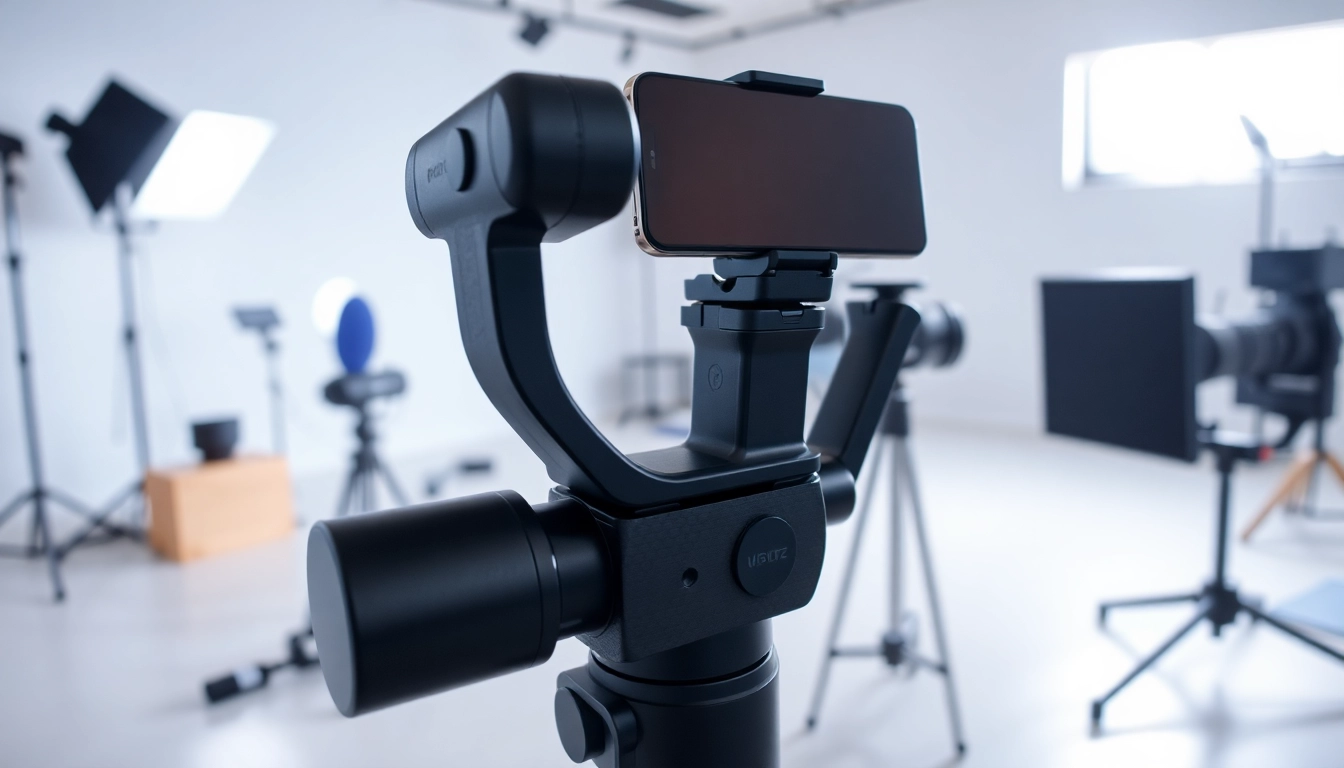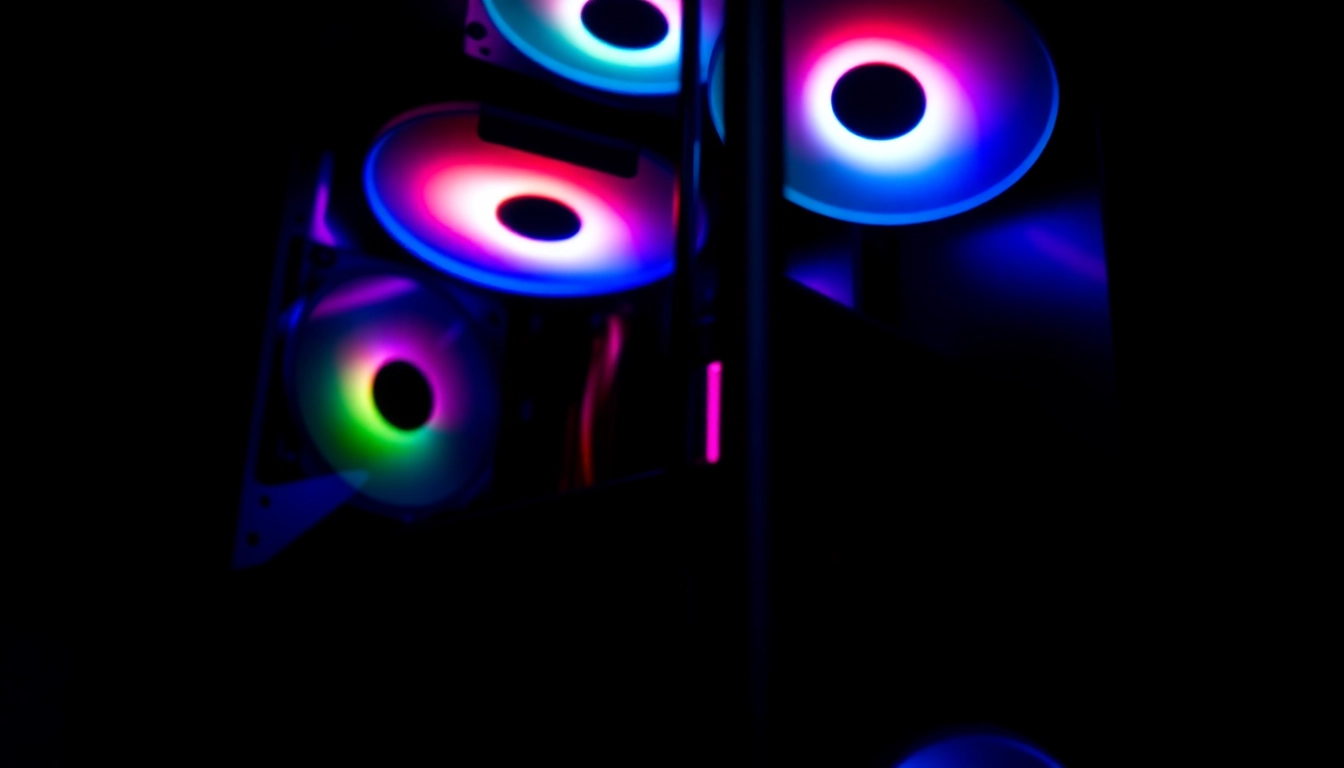Understanding the Gimble: What You Need to Know
Definition of Gimble and Its Purpose
In the world of videography and photography, a gimble plays a crucial role in delivering smooth, stable footage that captivates audiences. A gimble is a pivoted support that enables rotation and stabilization of a camera or smartphone around one or multiple axes. This design permits the device to remain level, even while the operator is in motion, which enhances the quality of video captures significantly. Over the years, gimbles have evolved from simple mechanical devices to advanced pieces of electronic equipment equipped with intelligent sensors and stabilization algorithms.
Types of Gimbles Available
There are primarily three types of gimbles prevalent in the market today:
- 2-Axis Gimbles: These gimbles provide stabilization in two directions—pitch and roll. They are lightweight, compact, often suited for smartphones, and perfect for casual users.
- 3-Axis Gimbles: These are the most popular type, allowing for pitch, roll, and yaw stabilization. This versatility makes them ideal for various applications, including professional videography and filmmaking.
- Handheld Gimbles: Typically used for smartphones, these gimbles are portable and easy to operate. They can deliver excellent stabilization, making them favored by vloggers and content creators.
Benefits of Using a Gimble for Smooth Footage
The advantages of utilizing a gimble extend beyond merely enhancing visual aesthetics. They include:
- Smooth Motion: Gimbles effectively counteract hand movements, allowing for fluid transitions while capturing video. This smoothness is essential for maintaining a professional image.
- Improved Creativity: With the added stability, creators have the freedom to experiment with dynamic shots, angles, and movements without compromising quality.
- Enhanced Tracking: Many modern gimbles come equipped with AI tracking features that automatically follow subjects, making them perfect for active scenes.
Key Features to Consider When Selecting a Gimble
Stability and Weight Capacity
When selecting a gimble, stability is paramount. The ability of the gimble to manage the weight of your camera or smartphone significantly impacts its performance. Always check the manufacturer’s specifications for maximum weight capacity and ensure that it suits your equipment. Additionally, look for features such as stabilization algorithms and motor strength that contribute to the overall steadiness during movement.
Battery Life and Usability
Battery life is another critical aspect, especially for videographers and content creators who spend extended periods on set. A gimble with long-lasting battery life—often exceeding 10 hours—enables uninterrupted shooting. Furthermore, usability features like an intuitive interface, easy setup, and user-friendly controls can greatly enhance your filming experience.
Compatibility with Cameras and Accessories
Before purchasing a gimble, it’s essential to verify its compatibility with your gear. Most gimbles support a range of cameras from smartphones to DSLRs, but specifications may vary. Additionally, check for accessory options such as tripod mounts, extension rods, or additional batteries that can enhance functionality and user experience.
How to Use a Gimble Effectively
Basic Setup and Configuration
Setting up your gimble is a crucial step toward achieving the desired footage quality. Start by balancing your camera on the gimbal’s platform. This entails adjusting the positioning of your camera until it stays level without any motor engagement. Once balanced, secure it in place and power up the gimble. Familiarize yourself with the controls, typically including mode switches, joystick functionality, and trigger options that alter stabilization modes.
Tips for Smooth Shooting Techniques
To maximize the effectiveness of your gimble during shoots, consider the following tips:
- Walk Smoothly: Practice walking with minimal bounce. The steps should be light and deliberate to maintain stabilization.
- Use Natural Movements: Allow the gimble to assist rather than force movements. Slow, controlled transitions yield the best results.
- Experiment with Angles: Diversifying your shooting angles can create more engaging footage. Utilize the gimble’s range of motion to achieve dynamic shots.
Common Mistakes to Avoid with a Gimble
Even experienced users can fall into pitfalls when using a gimble. To prevent common issues, consider these mistakes:
- Poor Balancing: Ineffective balancing can lead to motor strain and poor stabilization. Always check and readjust as necessary.
- Neglecting Firmware Updates: Manufacturers often release firmware updates that improve performance. Always keep your gimble updated for optimal functionality.
- Ignoring Maintenance: Regularly clean components and inspect for wear and tear to prolong the vida and performance of your gimble.
Advanced Techniques for Maximizing Your Gimble’s Potential
Utilizing Professional Settings
Gimbles typically offer multiple shooting modes, each tailored for different scenarios, such as follow mode, lock mode, or POV mode. Familiarize yourself with these settings to adapt to various shooting environments. Using these modes effectively can give your footage a polished, cinematic feel, elevating your production value.
Incorporating Movement and Angles
Creating engaging footage often depends on movement. Practice incorporating panning and tilting to add depth and motion. Additionally, experiment with various angles—low-angle shots can convey power, while high-angle shots offer a sense of vulnerability. A gimble allows you to experiment with these movements smoothly, providing creative freedom while maintaining stability.
Post-Production Editing to Enhance Footage
Even with the most stable footage, post-production editing can enhance the final product. Utilize software tools to correct color grading, trim clips, and stabilize any remaining shaky footage. Consistent editing styles help maintain a cohesive look throughout your project, improving the overall viewing experience.
Maintaining Your Gimble for Longevity
Cleaning and Care Tips
To ensure the longevity of your gimble, it’s important to follow a maintenance routine. Start by cleaning the gimbal’s arms and motors with a soft, dry cloth. Avoid getting moisture into electronic components. Store your gimble in a protective case to prevent dust build-up and physical damage when not in use.
Troubleshooting Common Issues
Even the best gimbles can present challenges. Common issues include unresponsive motors or erratic movements. Resetting the gimble or recalibrating it following the manufacturer’s instructions usually solves these issues. Always consult the user manual for troubleshooting steps specific to your model.
Upgrading Your Gimble Equipment Over Time
The technology surrounding gimbles evolves rapidly. As you develop your skills or alter your equipment, consider upgrading to a more robust model that accommodates higher weight capacities or incorporates the latest stabilization technology. Staying current with technology can substantially improve your production quality.



